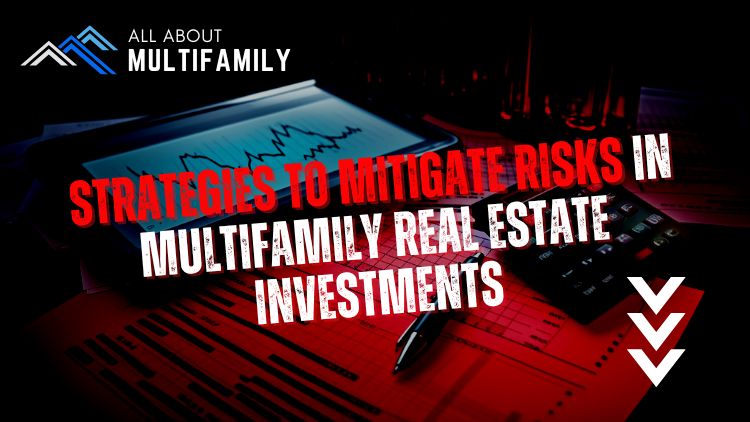By Jon Brandon, Co-founder – Ambitions Capital
Investing in multifamily real estate offers numerous advantages, such as strong cash flow, appreciation potential, and significant tax benefits. However, not everyone wants to commit the time, effort, and energy required to actively manage such investments. In this article, we will explore passive investing options in multifamily real estate.
Understanding Active vs. Passive Investing:
Before diving into passive investing options, it’s essential to distinguish between active and passive real estate investing. Active investing involves actively participating in various aspects of the investment process, such as finding deals, negotiating, financing, and property management. Passive investing, on the other hand, primarily involves providing capital and entrusting the active management to others.
The Real Estate Matrix:
To grasp the concept further, let’s consider the real estate matrix. In any real estate deal, four essential components come into play: capital, deal management, the property itself, and financing. All four components are critical, and removing any one of them would render the deal unviable.
Active Investing:
Active real estate investors actively engage in finding opportunities, negotiating deals, managing properties, and securing financing. They invest significant time, effort, and capital in these endeavors. Active investors play a hands-on role in all aspects of the investment process.
Passive Investing:
Passive investors, on the other hand, primarily contribute capital. They do not actively participate in finding or managing deals. Instead, they pool their funds and partner with active investors who handle these responsibilities. It’s important to note that some misconceptions exist, such as considering joint ventures as passive investments when they often require active participation.
True Passive Investing Options:
1. Syndication:
Syndication is one of the true passive investment options. In a syndication, there are two main parties: the general partnership (GP) and the limited partnership (LP). The GP takes on the active role, finding, managing, and financing the deal, while the LPs provide capital. Investors receive ownership benefits, including tax benefits, cash flow, and a share of any capital events (e.g., refinancing or property sale).
2. Real Estate Fund:
Real estate funds provide another avenue for passive investment. Funds are managed by professionals who handle multiple properties within the fund’s portfolio. Investors become limited partners in the fund, contributing capital. Like syndications, they benefit from tax advantages, cash flow, and participation in capital events. Funds have a longer lifespan and invest in various properties over time.
The Benefits of True Passive Investing:
Passive investors in syndications and real estate funds enjoy several advantages, including:
– Ownership benefits: They share in the property’s appreciation and cash flow.
– Tax benefits: Investors can benefit from depreciation and cost segregation studies, reducing their tax liability.
– Diversification: Funds and syndications allow investors to spread their capital across multiple properties, reducing risk.
– Limited time commitment: Passive investors are not burdened with day-to-day property management or deal sourcing.
The Quasi-Passive Option: Real Estate Investment Trusts (REITs):
While not offering the same level of ownership as syndications or funds, Real Estate Investment Trusts (REITs) are a quasi-passive option. REITs are companies that own real estate properties, and investors purchase shares of these companies. While REITs provide liquidity and accessibility, they lack the direct ownership benefits of syndications and funds.
Conclusion:
Passive investing in multifamily real estate provides an excellent opportunity for individuals seeking to benefit from the sector’s advantages without the hands-on involvement required for active investing. Syndications and real estate funds offer true ownership and numerous advantages, including cash flow, appreciation, and tax benefits. While REITs are a more accessible option, they do not provide the same level of ownership benefits as the other two options. Ultimately, the choice between these passive investing options depends on individual goals, risk tolerance, and investment preferences.
About Ambitions Capital
We engage in growth-minded multifamily investing grounded in principles of integrity and stewardship both for those who call our properties home and for our investors who trust us with their financial futures.
We have acquired and manage over 460 units in eastern North Carolina – representing more than $47 million in assets – using a strategy of finding under-valued and off-market properties, then making strategic value-add investments that build a better community for our residents and significant profit opportunities for our investors.
To learn more about Commercial Real Estate Investing analysis, resources, strategic advice and opportunities with us, contact us at https://www.ambitionscapital.com/


































![An In-Depth Look at Jake and Gino's Coaching Program [A Review]](https://allaboutmultifamilyinvesting.com/wp-content/uploads/2023/10/AAM-BMP-Blog-Covers-750-×-422px-6.jpg)


![Email Marketing Tips for Multifamily Real Estate Syndicators to Raise Capital [Templates included]](https://allaboutmultifamilyinvesting.com/wp-content/uploads/2023/09/AAM-BMP-Blog-Covers-750-×-422px-4.jpg)






![The Richest Kids In America [Book Review]](https://allaboutmultifamilyinvesting.com/wp-content/uploads/2023/09/AAM-BMP-Blog-Covers-750-×-422px-84.jpg)





















